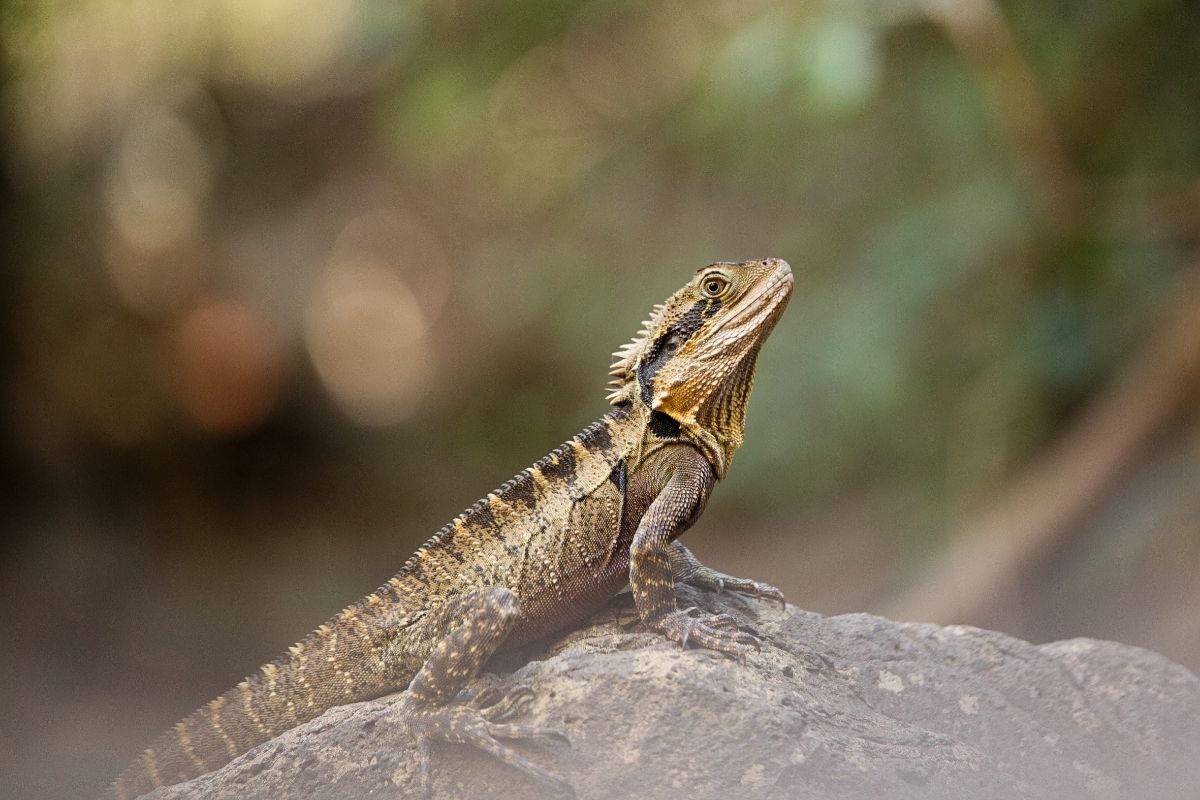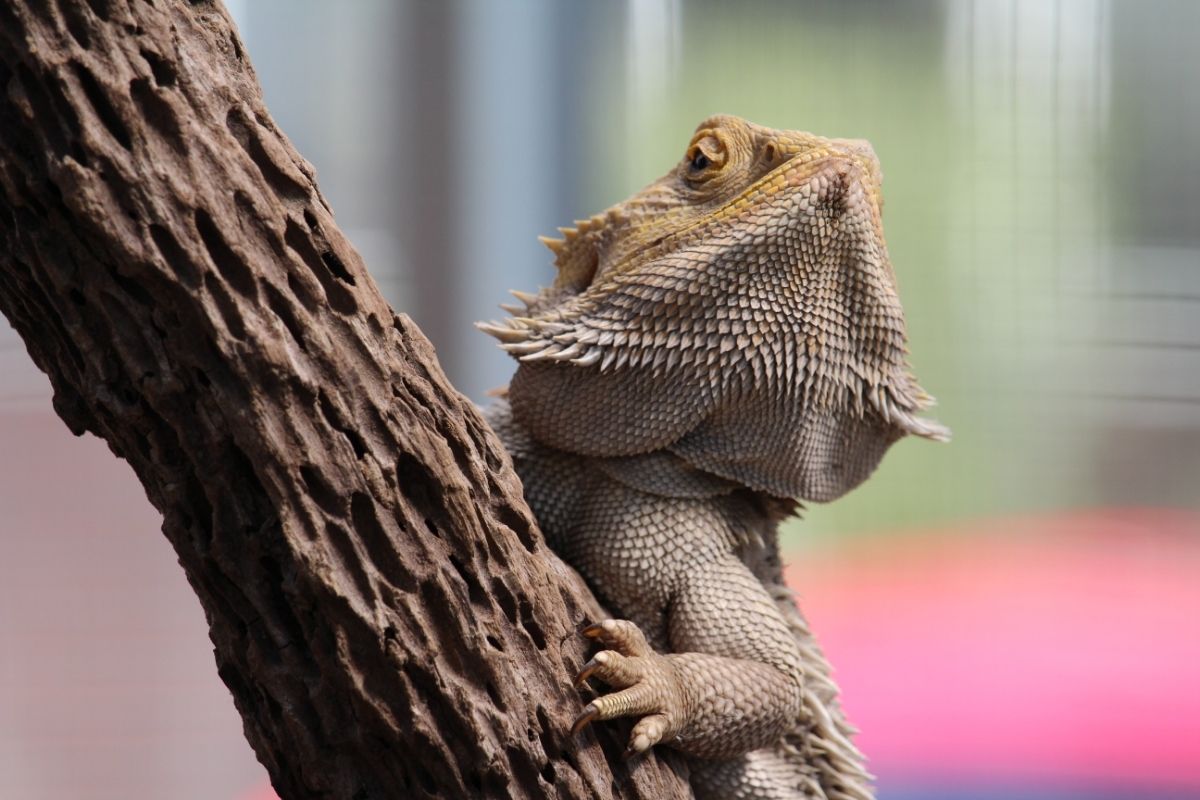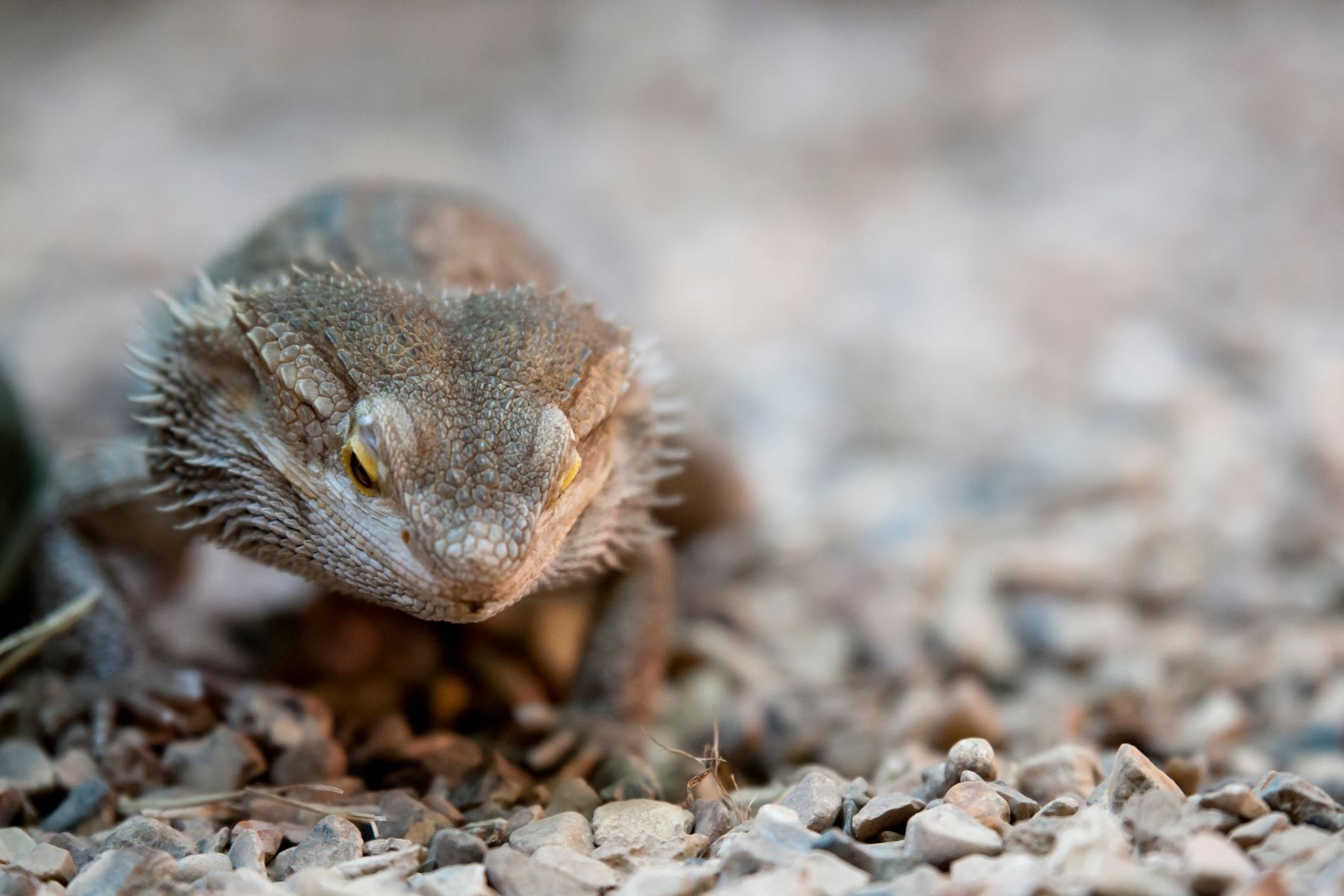Do you know how to care for bearded dragons? If you don’t, then you should definitely check out our article on caring for them. Bearded dragons are reptiles native to Australia.

They have been popular pets for years because they are easy to take care of and can live up to 20 years if properly cared for.
When it comes to owning a bearded dragon, the first thing that most people think about is whether they need a heating pad.
The answer is yes, but only when your bearded dragon has been in the sun too long.
You will find out why this is true in this article. So, let’s take a deep dive into whether a bearded dragon needs a heating pad or not.
Why Would A Bearded Dragon Need A Heat Pad?
Bearded dragons are native to the arid deserts of Australia. It is because of their natural environment that they are most at home when they are warm and get plenty of sunlight or UV light.
Because of the environment, these lizards have adapted, so they may not be entirely happy with the heat they are getting from the heat lamps in their carefully crafted, man-made environment.
In fact, some parts of your beardie’s terrarium might be too cold for them to venture into comfortably. A heating pad would be the ideal fix for this kind of issue.
When your bearded dragon is to keep warm, they are likely to eat more and generally be much more active.
Because of this, a heating pad might be an excellent accessory for your scaly friend.
So, if you notice that parts of your beardie’s habitat are too cold or it is at a lower temperature, you may want to add a heating pad to that area so that there is a constant heat source across the entire habitat.
Most heat pads will come with a thermostat that allows you to regulate how warm the terrarium gets.
One of the best places you can put your heating pad is under the terrarium using the sticky part of the heating pad.
What Are The Heating Requirements In A Bearded Dragon Habitat?
Before buying a heating pad, you’ll need to make sure that you understand what type of heat your bearded dragon requires.
This includes knowing their likes and dislikes and their current temperatures.
Some bearded dragons like warmer environments than others, while others prefer cooler ones.
Your bearded dragon’s tank should be between 65-85 degrees Fahrenheit (18-29 C). As far as humidity goes, you’ll want to maintain a dry atmosphere of around 70 percent.
These are just general guidelines, though. Your bearded dragon’s specific requirements will depend on where they were born, who they were bred by, how old they are, and many other factors.
How Do I Know If My Bearded Dragon Needs A Heat Pad?
There are several signs that your bearded dragon could use a heating pad.
1. Your bearded dragon is eating more often than normal. 2. Your bearded dragon is moving less frequently than usual.
3. Your bearded dragon seems lethargic.
4. Your bearded dragon is sleeping more than usual.
5. Your bearded dragon is acting grumpy.
6. Your bearded dragon has lost its appetite.
If any of these things happen, then it is time to consider adding a heating pad to your bearded dragon’s habitat.
Should You Upgrade The Basking Lamp Or Get A Heating Pad?
The basking lamp is important for keeping your bearded dragon’s skin healthy and moisturized.
The problem is that sometimes these lamps don’t provide enough warmth.
In order to avoid this situation, you could upgrade the basking lamp to one that provides more heat.
In addition, you could also buy a heating pad to supplement the basking lamp.

Both options are good choices depending on how much heat your bearded dragon needs and what type of enclosure you have set up.
- Basking Lamps: Basking lamps are great because they provide light without providing heat.
However, sometimes they aren’t sufficient when it comes to providing the right amount of heat.
If this is the case, then you may want to look into upgrading the basking lamp to something that provides better heat.
- Heating Pads: A heating pad is similar to a basking lamp, but instead of providing light, it provides heat.
This means that all you need to do is place it underneath the terrarium and turn it on.
This option is perfect for bearded dragons that live in smaller enclosures.
However, you might find yourself needing a bigger heating pad if you’re living in an aquarium.
How To Tell If Your Bearded Dragon Is Too Cold
You may not know it until it’s too late, but some bearded dragons tend to get colder than others.
For instance, if you buy a baby bearded dragon from a pet store, it may be too cold for them.
That doesn’t mean that the same thing won’t happen with a rescued bearded dragon. They can become chilled even after being taken care of properly.
To tell if your bearded dragon is getting too cold, check out its breathing pattern. Does it seem like they are panting? Are they looking around the room nervously?
If so, it may be time to add a heating pad to your beardie’s tank.
Are There Any Dangers To Using A Heating Pad In A Bearded Dragon Habitat?
Using a heating pad in a bearded dragon habitat isn’t dangerous unless you leave it on 24/7.
Overheating a bearded dragon can be detrimental to their health. This is largely due to the fact that bearded dragons cannot gauge temperatures
through their bellies, and because of this, they will not be able to tell if they are burning if the heating may is below them.
It is always a better idea to make sure that heat sources come from above the habitat rather than below. But in times of need, you can use a heating pad below the tank.
Just make sure not to leave them on too long and keep a careful eye on the temperature of the area so that your beardie does not get burned.
What Heat Sources Are Better Than Heating Pads?
There are many types of heaters available. Some include things such as ceramic elements, infrared bulbs, or fans.
You should consider which ones are best suited for your bearded dragon before purchasing any.
Below are two of the best heat sources you can use instead of a heating pad:
Use A Ceramic Lamp
Ceramic lamps work well because they provide both heat and light. Their only downside is that they must be placed on top of the substrate (which is usually sand) and therefore take up space.
Because of this, they are less practical for those who have small terrariums.
Use A Basking Lamp
If you don’t mind having a basking lamp in your terrarium, then using one is a good option.

These are very similar to basking lights except that they also provide heat. The only drawback to this type of light source is that it takes up more space than a heating pad.
Devices You Can Use To Control/Monitor Temperatures
It is important that you monitor the temperatures inside your bearded dragon’s enclosure.
As mentioned earlier, you want to avoid leaving a heated item on continuously.
Instead, you should use devices that allow you to control temperature. Here are a few examples of these kinds of gadgets:
Thermometer
A thermometer allows you to see how much heat is coming into your bearded dragon. In addition, you can adjust the heat accordingly.
Thermostat
Thermostats allow you to set the temperature according to what needs to be done.
For example, you can turn down the heat when the sun comes up and turn it back up again when people go to bed.
Frequently Asked Questions
In this section, we are going to answer some of your pressing questions regarding using a heating pad in a bearded dragon habitat. So, let’s get started!
Can You Leave A Reptile Heating Pad On All The Time?
It is recommended that you leave a reptile heating pad on only when the room your habitat is in does not meet the minimum nighttime low temperatures.
This is because, at this point, your bearded dragon may get too cold and get sick or die.
Where Do You Put A Heating Pad In A Bearded Dragon Habitat?
You can place a heating pad anywhere in your bearded dragon’s enclosure as long as it is kept away from your bearded dragon’s skin.
If the heating pad is placed directly next to your bearded dragon’s skin, it could cause burns.
However, if you put it somewhere else, like under the substrate where there are no plants or rocks, you shouldn’t have any problems.
Do Bearded Dragons Need Heating Pads At Night?
Yes, but not all the time. Your bearded dragon’s body temperature can drop when it gets dark outside.
Therefore, when the night falls, you need to make sure that you keep them warm by putting a heating pad underneath their substrate.
How Long Should I Keep My Bearded Dragon Warm With A Heating Pad?
When you first purchase your bearded dragon, you will probably want to give him a chance to acclimate himself to his new surroundings.
After about a week, you will know whether he likes being exposed to the air or prefers staying underneath the heating pad.
Once you figure out his preference, you can either increase or decrease the amount of time your bearded dragon spends with the heating pad.
What Happens If You Overheat Your Bearded Dragon?
Overheating your bearded dragon can kill it. If you notice that your bearded dragon has turned red around its eyes or if its breathing becomes labored, it means that it is overheated.
Always take your bearded dragon’s temperature before turning on the heating pad so that you can stop the process right away.
How Can You Tell Whether Your Bearded Dragon Is Too Hot?
If your bearded dragon turns red around its eyes, then chances are it is overheated.
Other signs include labored breathing and difficulty moving around.
Final Thoughts
The best way to raise healthy reptiles is to provide them with an ideal environment.
Providing your bearded dragon with a heating pad helps it stay warm during the winter months.
It also helps prevent it from getting too hot. If you would like more information about how to care for bearded dragons, check out our article here.
